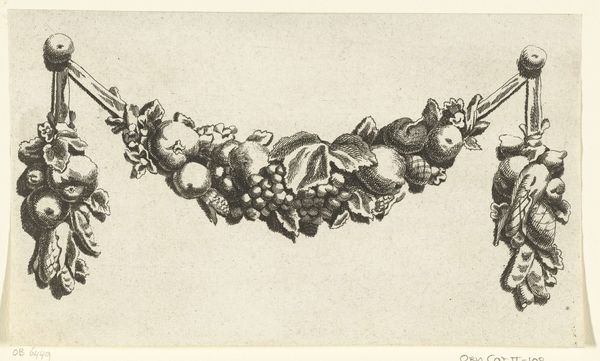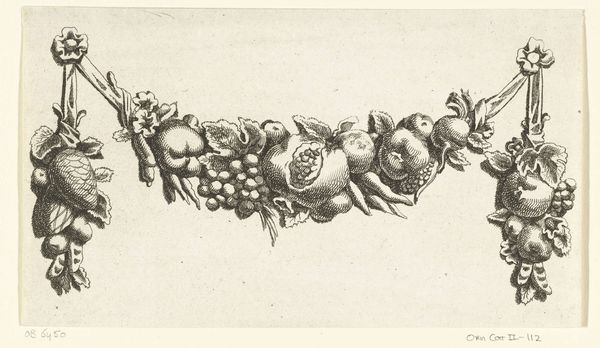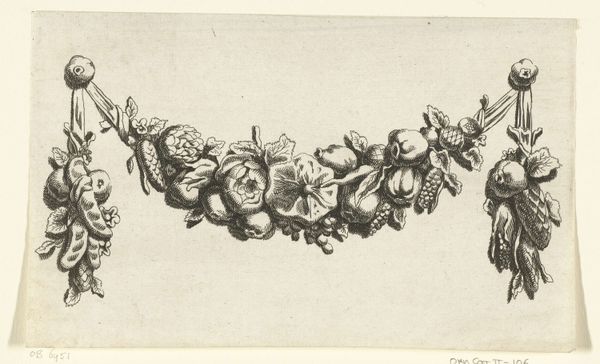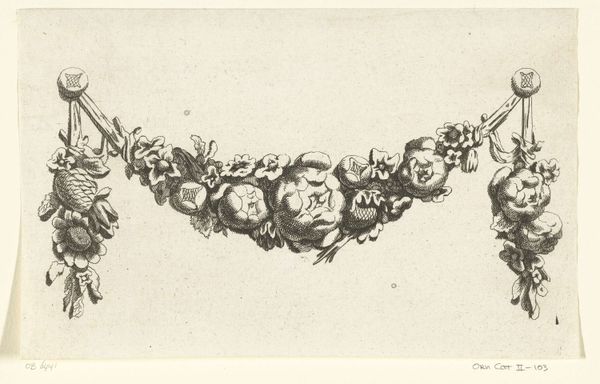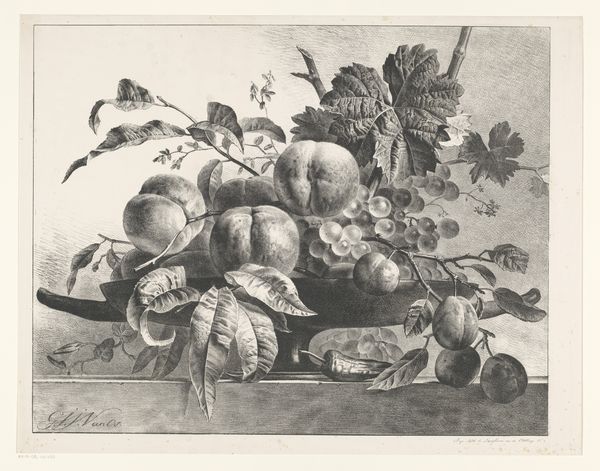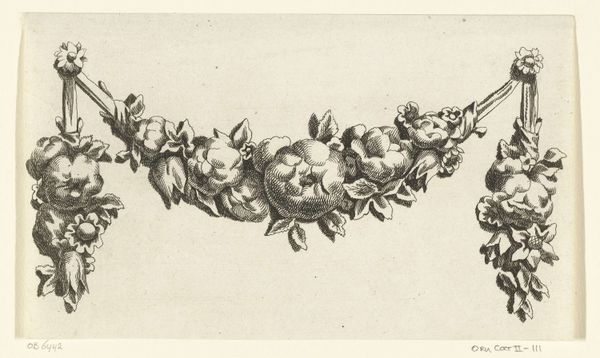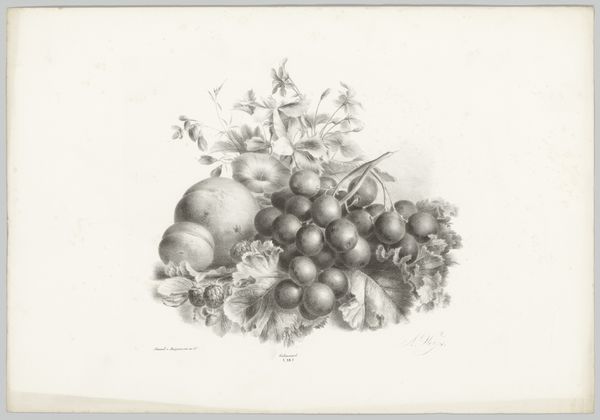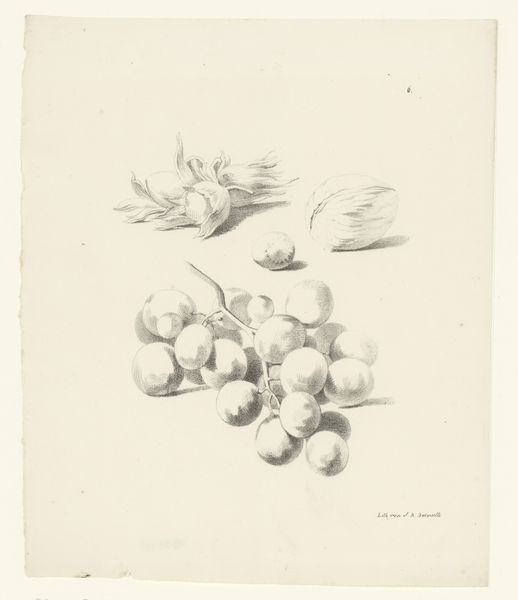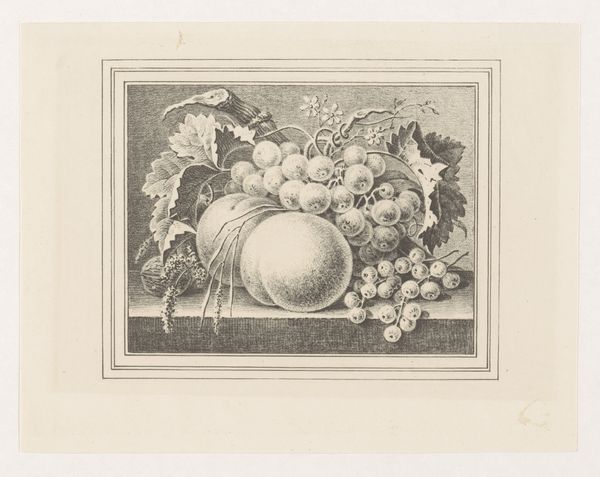
print, engraving
#
baroque
# print
#
pen sketch
#
engraving
Dimensions: height 115 mm, width 194 mm
Copyright: Rijks Museum: Open Domain
Curator: Looking at this engraving, "Festoen met een paprika in het midden" or "Garland with a pepper in the middle," created by Francoys Dancx before 1677 and currently held in the Rijksmuseum, I'm immediately struck by its density. Editor: I see a profusion of fruits and leaves depicted using what looks like fine, deliberate strokes. There’s a certain formality, even a weightiness, in the way the garland droops. Almost somber, if that's possible in fruit! Curator: The “somber” effect comes, I think, from the cultural context of Dutch Golden Age still lifes. These were not simply decorative; they served as moral allegories. We have to think about what kinds of coded messages this image communicates about wealth, status, and our relationship with the natural world. Is the inclusion of the pepper a reference to colonial trade? Editor: Perhaps. In terms of iconography, the garland motif is classical. Throughout art history it appears during times of celebration and commemoration, adopted from antiquity, usually meant to celebrate nature's abundance, to honor the gods, mark milestones. Is Dancx challenging or adhering to that established symbol in his artwork? The festoon’s heavy execution suggests more than just decorative delight, almost a commentary of luxury goods. Curator: Exactly! It pushes us to analyze what is being “fetishized,” to unpack the politics of that desire. Consider the era's socio-economic realities—the immense disparities in wealth due to colonial endeavors—and we’ll realize Dancx gives us a critical reflection of value and accessibility, not just a pretty decorative picture. Editor: Absolutely, because visual elements can reinforce cultural norms. So, you might look beyond Dancx's beautiful engraving and delve into issues concerning economic class in seventeenth-century Dutch culture. While I remain captivated by Dancx’s mastery of shading and texture, which adds a great tactile dimension, I must admit you opened my eyes. Curator: My intent exactly. Considering socio-historical concerns reveals that even an artwork, appearing as just pretty decorations, can open a fascinating dialog about what art signifies politically and aesthetically. Editor: Thank you. This deeper conversation brings an unexpectedly relevant insight.
Comments
No comments
Be the first to comment and join the conversation on the ultimate creative platform.

